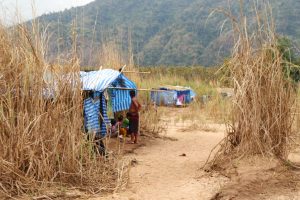Yesterday, BenarNews published a short article about the renewed refugee crisis at the border between Thailand and Myanmar, as thousands more people flee the conflict and economic dysfunction that has engulfed the country since the Myanmar military’s coup last February.
The article cites statistics from the Foundation for Education and Development, a Thailand-based NGO, which claim that Thai police have arrested nearly 20,000 people trying to cross the frontier in the last five months alone. It claimed that many have been found in desperate and life-threatening situations.
BenarNews quoted a spokesperson for the NGO as saying that the number of refugees detained by Thai police is growing daily, with many now facing shortages of food and shelter. They added that a car full of people fleeing Myanmar had driven the road into a ravine, and that two women died of suffocation after being left in a crowded car in the jungle.
Most of those attempting to reach Thailand have been forced to flee their homes due to the conflict that has erupted between the Myanmar armed forces and the host of armed People’s Defense Forces (PDFs) that have sprung up since the coup.
Some have also traveled to Thailand in search of work, a long-standing trend that has nonetheless worsened since the coup due to the near-collapse of Myanmar’s economy due to the COVID-19 pandemic and the mass closure of factories. Last year, the International Labor Organization wrote that 1.6 million people in Myanmar had been cast out of work by a combination of COVID-19 and the coup.
The remarkable and alarming finding from the Foundation for Education and Development is that those who have turned up at the Thai border are not just from the adjacent Kayin and Kayah states, which for decades have produced refugee flows into Thailand, but also from Sagaing, Magway, and Mandalay regions.
This represents an inversion of the historical mean, by which most of the conflict and displacement in Myanmar has occurred in ethnic minority-dominated regions, many of them on the country’s periphery, where ethnic minorities have waged a long struggle for independence or autonomy from the central state. The coup has now brought this struggle, and the subsequent savage counterinsurgency tactics of the military, to erstwhile stable regions of the country.
Late last month, the United Nations humanitarian agency OCHA announced that 694,000 people have been displaced by the conflict and insecurity stemming from the military coup, bringing the country’s total to more than 1 million for the first time. This included an astonishing 336,600 in Sagaing Region alone.
While the figure of 20,000 arrests since January offered by the Foundation for Education and Development seems rough and is hard to verify, it is roughly congruent with OCHA’s estimate that 40,200 people had crossed the borders into neighboring countries, particularly Thailand, since the coup – a figure that presumably does not include economic migrants.
Even taken as anecdotal evidence, the reports of renewed flight to Thailand offer another angle on the extraordinarily destructive conflict that has erupted since the coup. The flows of desperate people speak of a military ruling caste that has not only wiped out the limited and partial gains of Myanmar’s decade of opening in the 2010s, but dragged the country back to a worse place than it was on the eve of the opening.

































